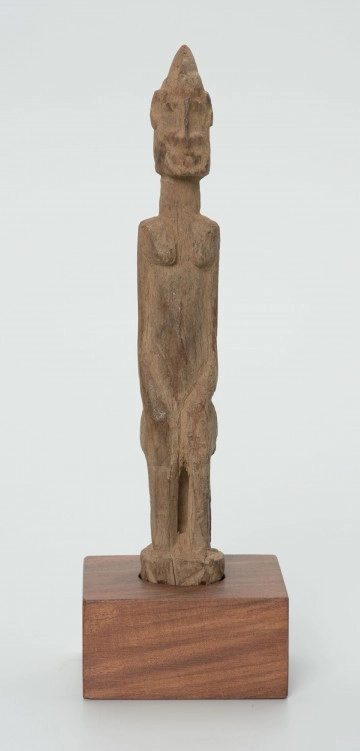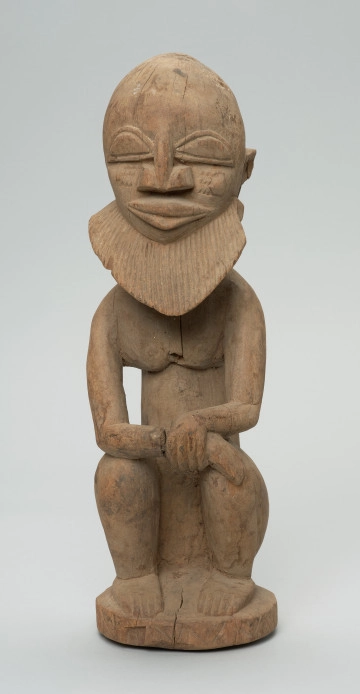
Nommo Ark
między 1951 — 2000
National Museum in Szczecin
Digital documentation under development
Part of the collection: Collection of Dogonian art
The lock for the door of the house of the great ginna family is called in the Dogo-so language ta koguru, which literally means attached to the door. Among the Dogon locks, one can still find the duro kunu type, which is hardly visible. The ta koguru lock is attached to the door from the outside and richly decorated. Ginna is the seat of the family patriarch (ginna bana), who lives there together with his wives and children. It is also a temple in honour of the ancestors as the founders of the family. Ginna is a two-storey structure with three different spaces: living, storage and sacred. The residential area is located on the ground floor and is occupied by ginna bana and his family. The family's storerooms are on the first floor, while the ritual area is located on a terrace formed on the flat roof and surrounded by a small wall. It is on this terrace that masked dances are held during the Dama festival. There are wagem altars erected to honour the ancestors in the low rooms.Locks and doors (large ones for ginna houses and small ones for granaries) are made by iru smiths. The Dogon blacksmiths deal mainly with the extraction and working of iron (in) and other metals: men (copper), men ban (brass) and labie (aluminium) and make mainly tools (hoes, sickles, axes, razors, knives), weapons (spear blades, swords) and bells and ornaments. They are also woodcarvers and create objects from wood. In addition to these doors and locks, they also make wooden vessels and figurines representing ancestors and deities. Door locks are nowadays a very popular collector's object. The discussed piece is topped with a representation of an ancestor who plays the role of a ginna guard.
Ewa Prądzyńska
Author / creator
Dimensions
cały obiekt: height: 20,5 cm, width: 18,4 cm
Object type
door
Creation time / dating
Creation / finding place
Identification number
Location / status

unknown
między 1951 — 2000
National Museum in Szczecin

unknown
między 1901 — 1950
National Museum in Szczecin

unknown
między 1951 — 2000
National Museum in Szczecin
DISCOVER this TOPIC
Castle Museum in Łańcut
DISCOVER this PATH
Educational path
0/500

We use cookies to make it easier for you to use our website and for statistical purposes. You can manage cookies by changing the settings of your web browser. More information in the Privacy Policy.
We use cookies to make it easier for you to use our website and for statistical purposes. You can manage cookies by changing the settings of your web browser. More information in the Privacy Policy.
Manage cookies:
This type of cookies is necessary for the website to function. You can change your browser settings to block them, but then the website will not work properly.
WYMAGANE
They are used to measure user engagement and generate statistics about the website to better understand how it is used. If you block this type of cookies, we will not be able to collect information about the use of the website and we will not be able to monitor its performance.